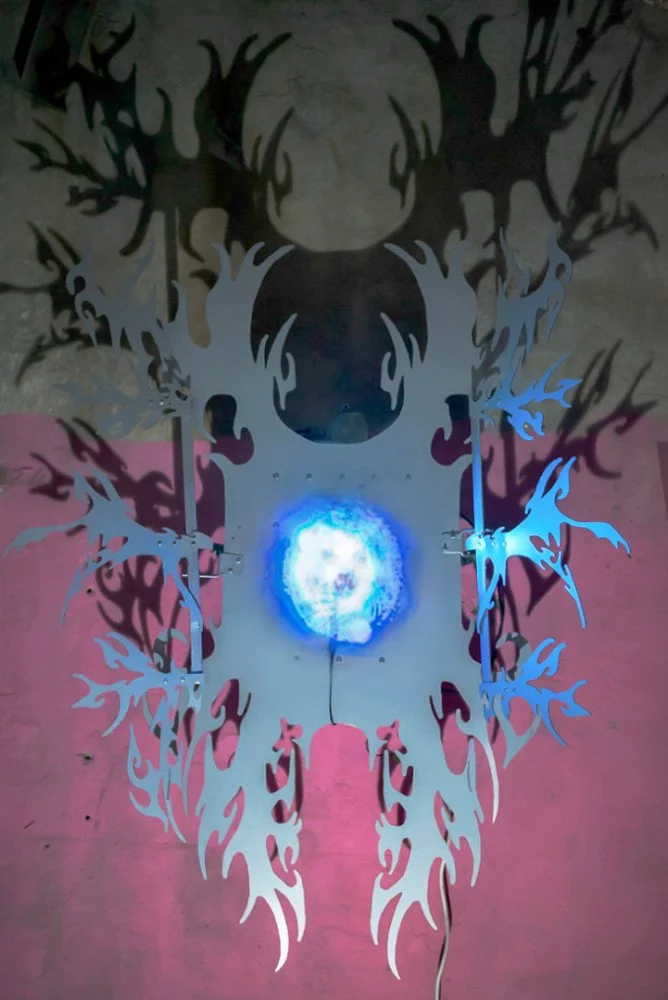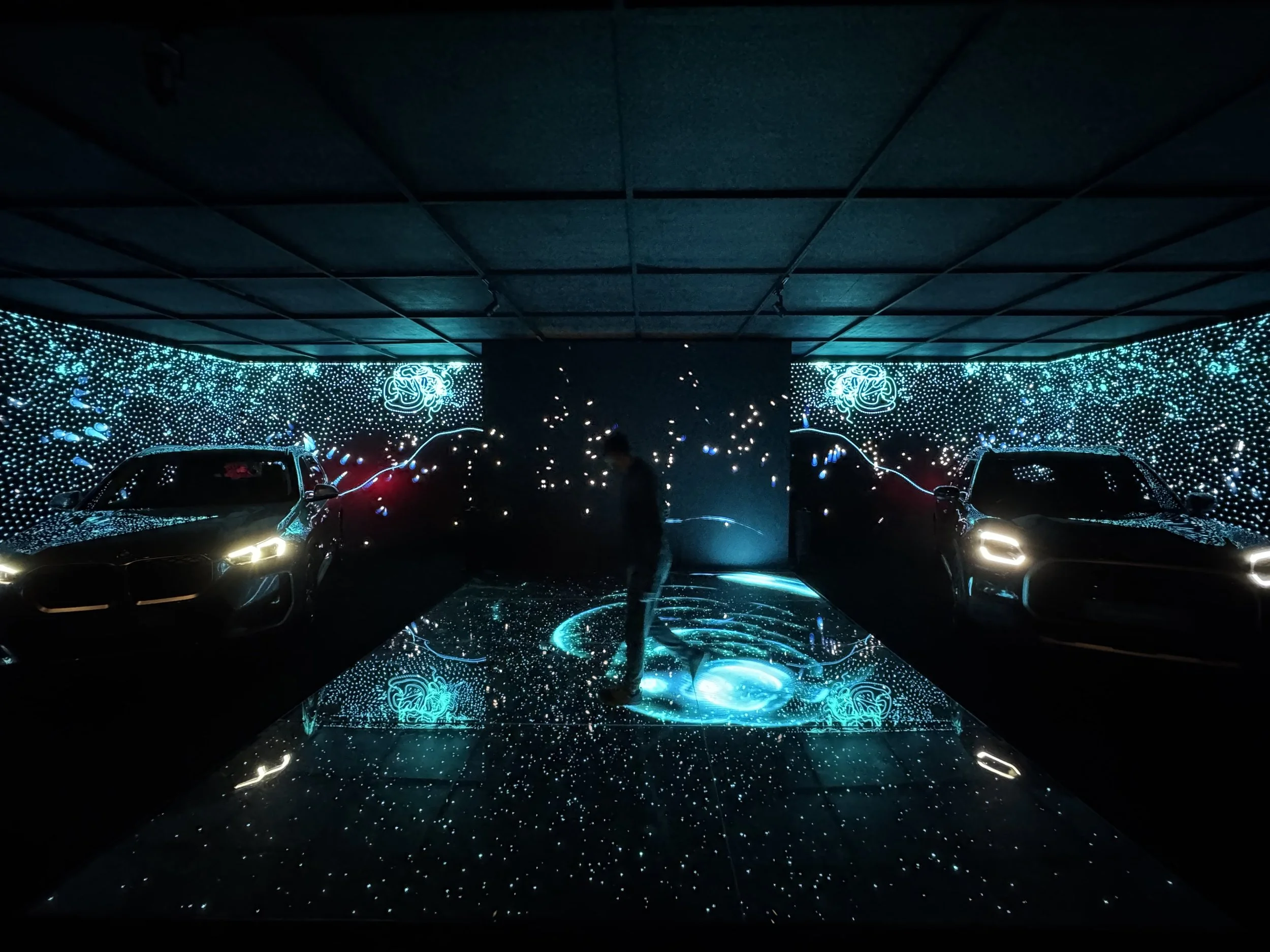Joan Lalucat
Joan’s art is an intimate exploration of the complexities of personal history, emotional depth, and the human condition. His creations are profoundly shaped by his experiences which he reflects on with the poignant sentiment: “To record my mother dying before she died, that's something I couldn't do.” This sentiment encapsulates much of his approach to art—capturing the raw and painful moments of life without exploiting them, but rather transforming them into meaningful artistic statements.
Based in Barcelona, Joan navigates themes of familial bonds, grief, and self-inflicted pain through a variety of mediums, including painting, actionist performances, and installations. His work is a constant push and pull between personal reflection and universal themes of endurance, resistance, and the human body’s vulnerability.
Through his art, Joan challenges the boundaries between personal truth and artistic interpretation, using raw, visceral content to create pieces that speak to both the mind and the body. In his installations, paintings, and performances, he forces the viewer to confront their own perceptions of suffering, loss, and identity—allowing vulnerability to take center stage, and inviting reflection on the fragile nature of our connections to others and ourselves. Either through paintings, actionist performances, and installations, they all wrestle with themes of familial bonds, self-inflicted pain, and the resistance of the human body, creating art that resonates with unfiltered honesty and complexity.
You describe using the body as a vehicle and the mind as a tool for manipulation in your art. Can you share how these concepts influence your creative process and the final form of your projects? Which would you say is stronger, the mind or the body?
When I refer to the body and mind in these terms, it is when I use them for work related to actionism. Or at least it’s where they have those functions. Then the body becomes a kind of vehicle - which you can't get rid of - and the mind becomes a space in which I can work. In any case, it involves wear and tear, sometimes more, sometimes less, I can never know, nor can I anticipate.
When I perform some action, I try not to separate one from the other, as I believe that the result cannot be exclusively physical or mental. With that quote what I’m perhaps trying to refer to is that the body cannot be fooled, and instead it becomes an exercise of resistance, and yet, the mind can be manipulated by setting traps, deceiving it. When I paint, however, none of this makes sense.
Your "Real Art" manifesto speaks of using personal relationships and situations as material for your work, though not in a literal sense. How do you navigate the line between personal truth and artistic interpretation in your creations?
I would say that there are several ways to work with personal content. In my case, the elements are transported to a totally different context that has nothing to do with their origin. For example, in “Angela (2009-?)” I expose my real partner -with whom I have been in a relationship since 2009- inside a transparent box during a presentation at the Faculty of Fine Arts to reflect on the durations and limits of relationships.
However, it does not talk about our personal relationship. In “Family is the most important thing” I submerge a photo of my mother into a jar of my own urine to reflect on the consequences of assaulting and degrading personal material - in this case, a photograph that can be reprinted-. Yet again, it does not speak to my personal relationship with my mother. If anything, it shows what a son can do with a photo of his mother. But it does show a boundary that you are forced to navigate. In “Heaven on Earth”, Bill Viola confronts a record of his newborn son against another one of his dying mother. To record my mother dying before she died, that's something I couldn't do.
Your work often involves pain, both physical and emotional. How do you decide when pain becomes a tool for creation rather than a burden to carry?
It is often said that a tormented artist has better “results”. I’m not so sure, but without a doubt pain can be one of the main tools of every artist. When you perform acts of creation you automatically enter a world without limits, and in them you will see your worries, fears and pains. Like dreams. I like to think that pain and beauty are not so far apart, and that something very beautiful can move you, but also hurt. That's what I try to do with some of my paintings, as for example in the series “Selfharms”.
If your grandfather, who painted but whom you never met, where to view your art today, what do you imagine his response might be? Would his opinion matter to you?
Of course I would. I think he would probably think that I have partly failed taking advantage of her inherited talent of having such an impressive figurative brushstroke as hers, but at the same time he would see little glimpses of it. I feel that I've had to deviate a bit from her traditional style to look for new things, but it's certainly something I want to continue to enhance and practice.
I also don't think he would see my work and say, “I don't get it”, or that sort of thing. I think he would have been proud knowing that I've been able to dedicate myself professionally to painting, among other things.
Describe the process of a painting from beginning to end. How is an idea born?
It depends on the line or series I'm working on. But in general it's a work of layers that never progresses gradually or towards a pre-established goal. In the “Blood, flesh and bones” series, I first paint with acrylics, pastels and charcoal to prepare the ground. Then with oils I paint slowly, trying to move forward taking two steps forward and one step back. For me it's more visceral than mental work. The more I rationalize things, the worse the result. Or at least it seems that way to me.
You’ve mentioned the idea of moving away from what we call 'human.' What part of yourself, if any, do you feel gets left behind in that process, and what do you gain instead?
I could say that I don't feel very identified with rational thinking about most things. That doesn't mean that I go around acting crazy, simply that there are certain ways of relating to the environment that hurt me. This is how, in the works of Actionism, for example, being already abstract and complex, I try to displace these systems of relationships. In a way it's like formatting some aspects of myself, if that makes any sense. And what we call art allows me to create new horizons and explore them with his creative processes.
When you create, are there specific emotions or memories that feel too personal to express fully, or do you see art as a space where nothing is off-limits?
I mentioned earlier that I would not videotape my mother in bed, moments before she would die. I guess this means that I don't like to do anything that makes other people suffer. I also don't think of personal memories to transform them into art. I like to start from personal concerns, but that simultaneously have nothing to do with me or my biographical facts.
The “Self Harms” series, for example, came out of nowhere, almost for reasons of composition and tensions in the design of the image. But then I saw that deeper concerns surfaced, such as the ability to consciously mistreat ourselves, and boycott ourselves over and over again. Regarding the limits of art, I believe that creatively there are none, and that surely the society we have built is the one that sets them. I would also say that in general I'm against censoring any kind of work of art.
Interview by MACARENA ARIAS SILVA DE POZO
What to read next




















